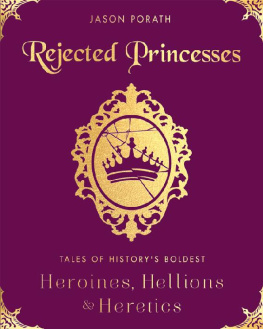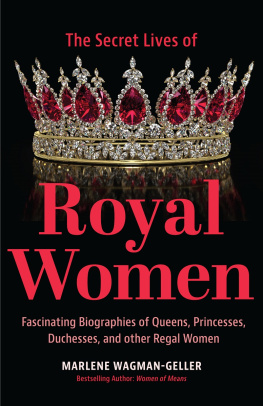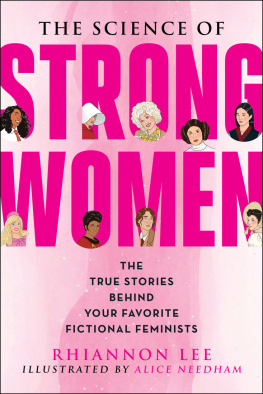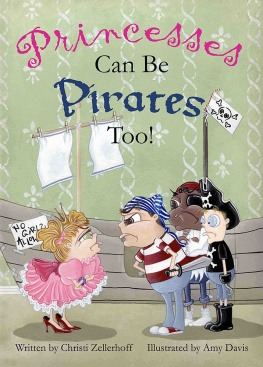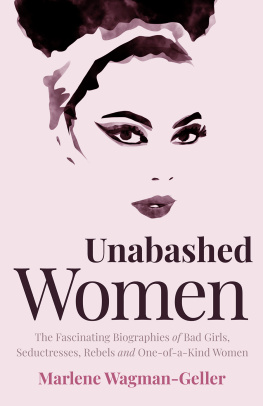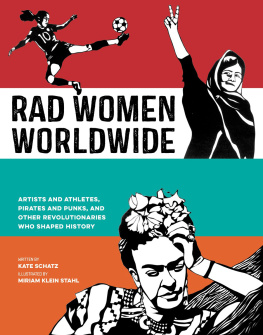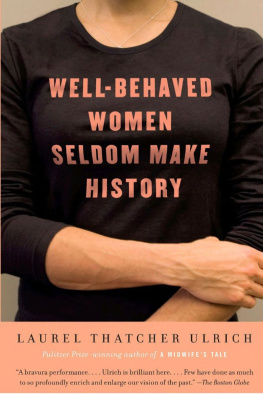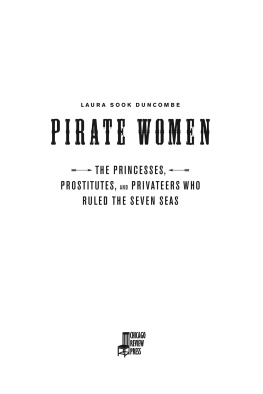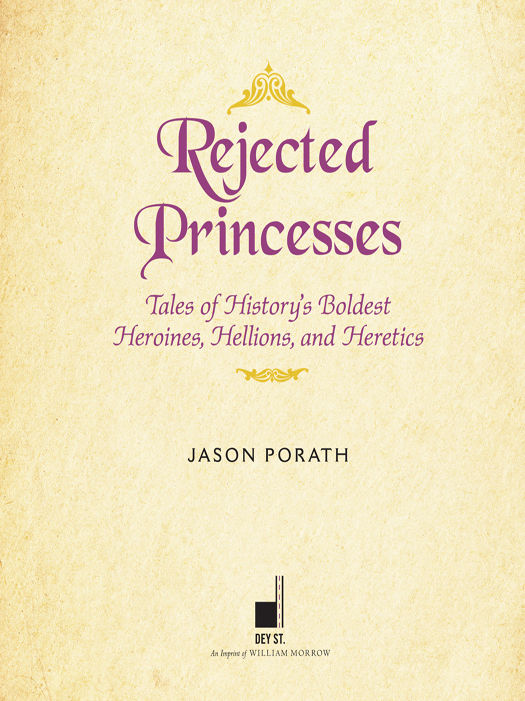

Contents

T heres a list of stories in your head. You know the one. Its the list schools give to girls: Amelia Earhart, Marie Curie, Rosa Parks, and so on. Its safe. Its censored. Its short. Its the list of amazing women in history.
But what of the untold stories? The uncompromised ones? The uncomfortable ones? The rejected ones?
Thats where this book comes in.
Who Rejects the Rejected?
Lets get the obvious out of the way: if youre expecting a collection of pitched-and-rejected ideas for animated movies here, youre out of luck. I didnt pitch any of these as movies. To my knowledge, nobody has. Heck, most of the women covered here arent even princesses. Rejected Princesses is less a description and more a question: Why dont we know about these women? Where are their movies?
I mean, think back to history class. You learned about male figures running the gamut from Abe Lincoln to Genghis Khan. And on the female side? The aforementioned short list. And that list was not a foregone conclusion: its not like history lacks for strong-minded women. But at some point, our society collectively decided that people like Elizabeth I and Cleopatra VII are fine, but rebels, hellions, and warlords? Not so much. And when someone like Harriet Tubman does sneak onto the list? The unpalatable parts of her story, the bits not suitable for children, get left off.
Now, as you read this book, some of you will bristle a bit and say, Well, thats obviously not suitable for kids. Okay, surebut where is that line? Ancient Greek children had Zeus impregnating women while in the shape of various animals. Norse children heard about Odin plucking out his own eye for wisdom. Inuit children got a lot of talk about genitalia in their folktales. (Seriously, look them up. Inuit stories can get pretty weird.) Kids are flexible. Kids can handle more than we think.
Whats suitable for kids defines what sort of kids we as a society want. And right now, the girls society wants are the ones who can fit on a short listwhile the list for boys is without borders or end.
If girls can be anything, let them be anything.
This is a book for any girl who ever felt she didnt fit in. You are not alone. You come from a long line of bold, strong, fearless women. Glory in that.
This is a book for anyone who ever underestimated a girl.
Whered This All Come From?
I hadnt planned to start this project.
It all began with a lunchtime question posed to my DreamWorks Animation coworkers: Who is the least likely candidate for an animated princess movie? Over an hour, we tried one-upping each other with increasingly inappropriate suggestions (most inappropriate: Nabokovs Lolita ). Throughout, I kept suggesting obscure warrior women Id learned about from Wikipedia binges, like Angolan freedom fighter Nzinga Mbande or tank-driving Soviet Mariya Oktyabrskaya . None of my coworkers had ever heard of them. I thought that should change.
By the end of the conversation, I knew this needed to exist. I had almost no artistic training to speak of (I was a very technical sort of animator), and no background as a historian, but I did the best I could. After I left DreamWorks, I put a handful of entries online, to see if there would be any reaction.
There was. In short order, www.rejectedprincesses.com made Reddit, Huffington Post, Buzzfeed, NPR, and newspapers around the globe. I got a book deal. And here we are.
Throughout this project, Ive been asked one question more than any other: Why? Why are you, a random white guy from Kentucky, so interested in womens issues? Whered this come from? To which I have a simple reply. And its one that I want you to keep in mind as you read this book, as you gaze upon hilariously mismatched art styles and subject matter. Keep it in mind as you chuckle and automatically dismiss these stories as unsuitable for kids. The reply is: Why not?
What We Know and How We Know It
At some point, the following scene is going to happen.
In a bookstore, someone will pick up this book. Not recognizing a lot of the names in the table of contents, theyll flip to an entry they do knowmaybe Joan of Arc or Elisabeth Bthory . And theyll spot something they think is wrong. And theyll put down the book and say, How can I trust anything in this book if this one thing is wrong?
Which is a shame, for a couple reasons. First of which is that theyll be missing out on a lot of great stories. But second is that it shows a common misunderstanding of how history worksbecause history is not an unchanging record of facts and figures. History changes. It shifts and evolves, as does our understanding of it.
One example of many: Textbooks for decades held that James Watson and Francis Crick discovered the structure of DNA. Wasnt until years later that it came to light that theyd based much of their work off that of a largely uncredited woman named Rosalind Franklin. Does that make everything else in the textbook incorrect? Of course not! The textbook is a product of its time and the knowledge available when it was written. And this book is the same.
Know that a lot of love and effort has gone into creating Rejected Princesses and making it a valuable (and entertaining) resource. I may not be a trained historian, but Ive done my damnedest to treat these stories right. And really, what else can you ask?
Heres hoping you enjoy. I certainly have.
YOU SHOULD KNOW WHAT YOURE ABOUT TO READ
Unlike what you may be used to reading, this book doesnt pull punches . Its not censored. Sometimes theres rough content.
Not every entry is suitable for every reader (despite the cartoony demeanor).
To help you know whats a good fit for you, this book provides helpful guide markers .

As the book goes on, the icons change from green to yellow, then to red. The way to think about these divisions is, how much evil are you comfortable with in the world?
Green is simple. Good beats evil, the world is moral. Think PG.Yellow is more complex. No black and white, just shades of gray. Think PG-13.Red requires maturity. You must be your own moral guide. Think R.
Additionally, look out for these icons that tell you whats in an entry.

On to the stories!


The Wrestler Princess
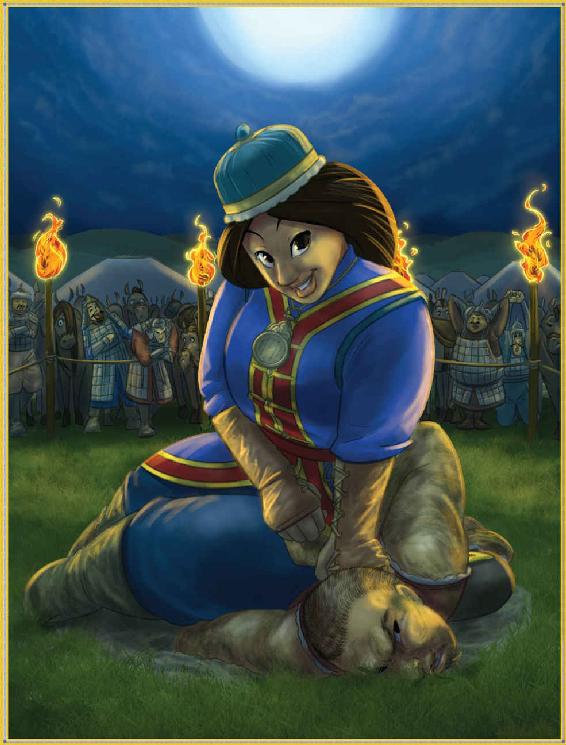
S taring at you from the opposite page is none other than Khutulun, princess of 10,000 horses, the pride and glory of the Mongol Horde.
A bit of background on the Khans Mongol Empireit was, for the time, as big a deal as deals got. At its height, it stretched from China to Europe and the Middle East, making it, at the time, the largest contiguous empire in human history. The whole thing was started by Genghis Khan (maybe youve heard of him), who unified a number of nomadic tribes under a single banner. While he did bring many advances to the regions he conquered (religious tolerance, increased trade, meritocracy), you probably know him more for his reputation as a brutal dictator. Certainly it was the defining characteristic of his reputation back in the day too.
Next page
